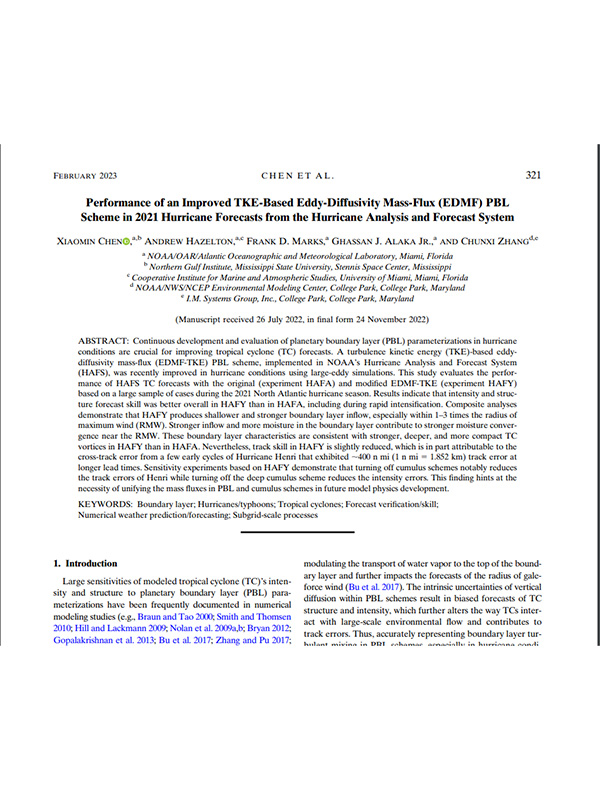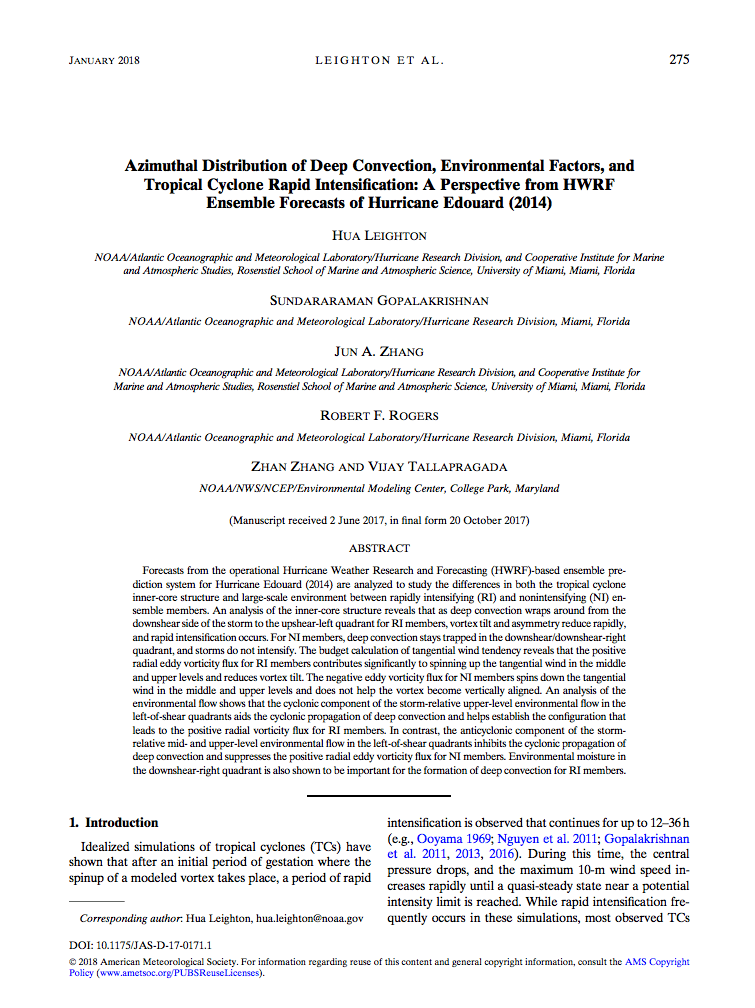Performance of an Improved TKE-Based Eddy-Diffusivity Mass-Flux (EDMF) PBL Scheme in 2021 Hurricane Forecasts from the Hurricane Analysis and Forecast System
Chen, X., Hazelton, A., Marks, F. D., Alaka Jr, G. J., & Zhang, C. (2023). Performance of an Improved TKE-Based Eddy-Diffusivity Mass-Flux (EDMF) PBL Scheme in 2021 Hurricane Forecasts from the Hurricane Analysis and Forecast System. Weather and Forecasting, 38(2), 321-336.
Abstract: Continuous development and evaluation of planetary boundary layer (PBL) parameterizations in hurricane conditions are crucial for improving tropical cyclone (TC) forecasts. A turbulence kinetic energy (TKE)-based eddy-diffusivity mass-flux (EDMF-TKE) PBL scheme, implemented in NOAA’s Hurricane Analysis and Forecast System (HAFS), was recently improved in hurricane conditions using large-eddy simulations. This study evaluates the performance of HAFS TC forecasts with the original (experiment HAFA) and modified EDMF-TKE (experiment HAFY) based on a large sample of cases during the 2021 North Atlantic hurricane season…




